Emerald Tree Boa
- December 17, 2023
- 0 comment
The Emerald Tree Boa (Corallus caninus) is a mesmerizing snake species known for its striking appearance and arboreal lifestyle. Found predominantly in the rain forests of South America, including regions of Brazil, Colombia, and Venezuela, these snakes are easily identifiable by their vibrant green coloration and distinct white markings.
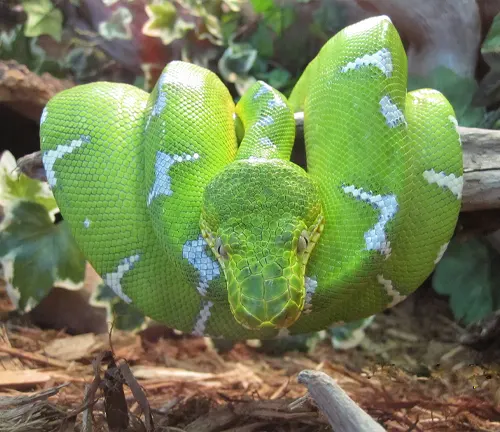

The emerald green scales serve as excellent camouflage amidst the lush foliage of their habitat, allowing them to blend seamlessly into the treetops. One of the most remarkable features of the Emerald Tree Boa is its coiled resting position, where it wraps its body around tree branches, showcasing a unique and iconic spiral pattern. Sporting large eyes with vertical pupils, this nocturnal species is well-adapted to hunting in low light conditions.
Preying primarily on small mammals and birds, the Emerald Tree Boa is equipped with sharp, hooked teeth to secure its prey. Despite their somewhat intimidating appearance, these snakes are generally not aggressive toward humans and are more inclined to retreat when confronted. Enthusiasts and herpetologists appreciate the Emerald Tree Boa not only for its stunning aesthetics but also for its fascinating behaviour, making it a sought-after subject of study and admiration in the world of reptile enthusiasts.
| Characteristic | Description |
|---|---|
| Scientific Name | Corallus caninus |
| Geographic Range | South America (Brazil, Colombia, Venezuela) |
| Habitat | Rain forests, particularly arboreal environments |
| Coloration | Vibrant emerald green with distinctive white markings |
| Body Length | Adults typically range from 6 to 7 feet (1.8 to 2.1 meters) |
| Coiling Behaviour | Notable for coiling around tree branches in a spiral pattern |
| Eyes | Large with vertical pupils, adapted for nocturnal hunting |
| Diet | Primarily small mammals and birds |
| Teeth | Equipped with sharp, hooked teeth for securing prey |
| Behaviour | Generally non-aggressive towards humans, tends to retreat |
| Nocturnal | Nocturnal, active during the night |
| Reproductive Strategy | Viviparous, giving birth to live young |
| Conservation Status | Not currently listed as endangered or threatened |
Emerald Tree Boa: A Diverse and Enduring Class of Vertebrates

The Emerald Tree Boa (Corallus caninus) stands as a captivating representative of the reptilian realm, showcasing a unique blend of features that distinguish it within the diverse world of vertebrates.
Unveiling the Reptile Form
At the core of the Emerald Tree Boa’s identity lies its striking form. With its vibrant emerald green scales and distinctive white markings, this arboreal serpent epitomises the elegance and adaptability characteristic of reptiles.
Scaled Skin for Protection and Thermoregulation
The scaled skin of the Emerald Tree Boa serves not only as a visual spectacle but also as a functional marvel. Providing protection against environmental hazards, the scales play a vital role in thermoregulation, allowing the snake to navigate the varied temperatures of its habitat.
Exothermic Physiology and Adaptation to Temperature
Embracing an exothermic physiology, the Emerald Tree Boa adeptly regulates its body temperature through external sources. This adaptation enables it to thrive in the diverse ecosystems it inhabits, from the dense rain forests to the elevated branches of towering trees.
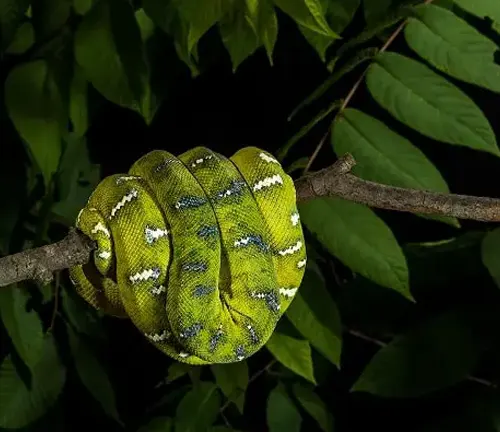
Skull Structure and Diverse Dental Adaptations
The intricacies of the Emerald Tree Boa’s skull structure contribute to its prowess as a predator. Combined with diverse dental adaptations, including sharp, hooked teeth, this snake is well-equipped for capturing and securing its prey.
Limb Variations and Locomotion Strategies
Unlike some reptiles, the Emerald Tree Boa lacks limbs, relying on its powerful muscles and gripping capabilities to traverse the branches with remarkable agility. This limbless adaptation is a testament to its arboreal lifestyle and effective locomotion strategies.
Exploring the Reptile Habitat and Distribution
The Emerald Tree Boa’s habitat extends across the vibrant landscapes of South America, where it has carved out niches in terrestrial, aquatic, and predominantly arboreal environments.
Thriving in Terrestrial, Aquatic, and Arboreal Environments
Adapting seamlessly to terrestrial, aquatic, and arboreal realms, the Emerald Tree Boa showcases its versatility in navigating a range of environments, making it a true marvel of ecological adaptation.
Adapting to Diverse Ecosystems Worldwide
From the arid deserts to the lush rain forests, from the towering mountains to the watery swamps, the Emerald Tree Boa’s ability to adapt to diverse ecosystems worldwide underscores its resilience and evolutionary success.
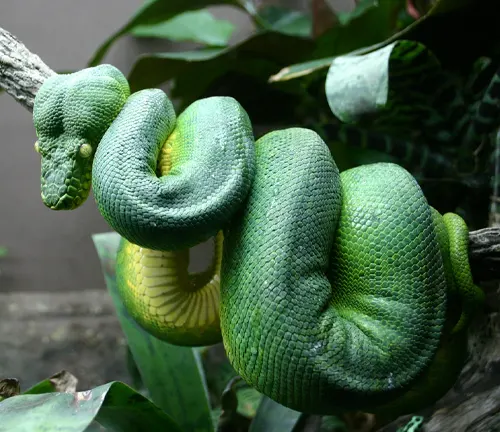

Geographic Distribution and Endemism
While distributed across South America, the Emerald Tree Boa exhibits pockets of endemism, emphasising its localised presence and the intricate ecological relationships within its native regions.
Concentration in Tropical Regions and Biodiversity Hotpots
Notably concentrated in tropical regions, the Emerald Tree Boa contributes to the biodiversity hotpots of South America, playing a vital role in the intricate web of life within these lush and ecologically rich areas.
Delving into the Reptile Diet and Hunting Strategies
The dietary habits and hunting strategies of the Emerald Tree Boa shed light on its role as a carnivorous predator, influencing the delicate balance of its ecosystem.
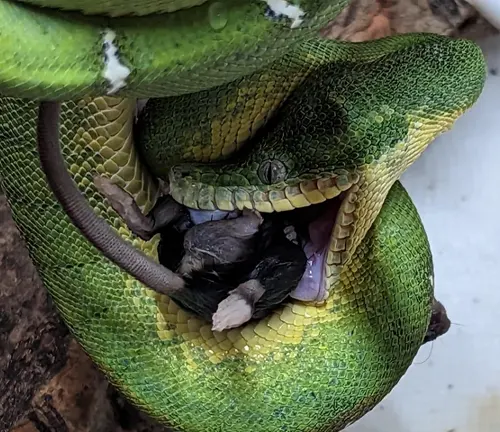
Carnivorous, Herbivorous, and Omnivorous Reptile Diets
The Emerald Tree Boa predominantly follows a carnivorous diet, preying on small mammals and birds. This specialisation in carnivora reflects its role as a key player in the food chain.
Prey Selection and Hunting Techniques
With a keen sense of ambush, the Emerald Tree Boa employs stealth and patience in its hunting techniques. Its ability to strike with precision underscores its effectiveness as a predator in its arboreal domain.
Ambush, Pursuit, and Specialised Adaptations
The hunting repertoire of the Emerald Tree Boa includes a mix of ambush tactics, pursuit strategies, and specialised adaptations, showcasing the versatility that has allowed it to thrive in its specific ecological niche.

Symbiotic Relationships and Food Chains
Beyond its role as a predator, the Emerald Tree Boa engages in intricate symbiotic relationships within its ecosystem, contributing to the delicate balance of food chains and nutrient cycles.
Reptile Roles in Ecosystem Balance and Nutrient Cycling

As a reptile species, the Emerald Tree Boa plays a crucial role in maintaining ecosystem balance by controlling prey populations and participating in nutrient cycling, thereby influencing the overall health of its habitat.
Reproduction and Life Cycle of Reptiles
The reproductive strategies and life cycle of the Emerald Tree Boa provide insights into its resilience and the continuation of its lineage within the complex web of life.
Oviparous, and Viviparous Reproduction
Embracing various reproductive strategies, the Emerald Tree Boa can be oviparous, or viviparous, showcasing its adaptability to different reproductive modes based on environmental conditions.
Egg-Laying Strategies and Parental Care
The egg-laying strategies of the Emerald Tree Boa involve selecting secure nesting sites and demonstrating varying degrees of parental care. This commitment to offspring survival contributes to the species’ overall reproductive success.
Nesting Sites, Incubation Periods, and Hatching Survival
Exploring the specifics of nesting sites, incubation periods, and the challenges faced by hatching offers a deeper understanding of the Emerald Tree Boa’s reproductive journey and the critical early stages of its life cycle.
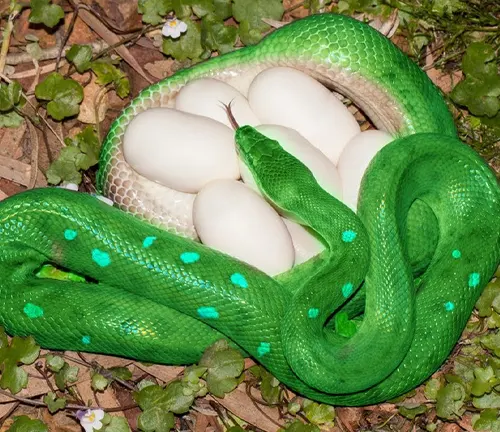
Conservation Status and Threats to Reptiles
The conservation status of the Emerald Tree Boa unveils the challenges faced by this captivating species in the modern era, as it contends with habitat loss, hunting, and illegal wildlife trade.
Facing Habitat Loss, Hunting, and Illegal Wildlife Trade
Like many reptiles, the Emerald Tree Boa confronts threats from habitat loss due to deforestation, hunting for its vibrant skin, and the illegal wildlife trade, jeopardising its survival in the wild.
Human Encroachment and Climate Change Impacts
Human encroachment and climate change further compound the challenges faced by the Emerald Tree Boa. Habitat degradation and alterations in temperature patterns pose additional threats to the stability of its ecosystems.
Conservation Efforts Underway
Despite the challenges, ongoing conservation efforts aim to preserve the Emerald Tree Boa and its habitat. Initiatives include habitat preservation, research, and educational programs to raise awareness about the importance of protecting this species.
Protected Species, International Agreements, and Habitat Preservation
Acknowledging its significance, the Emerald Tree Boa benefits from protected status in certain regions and international agreements aimed at curbing illegal trade. Efforts also extend to the preservation of crucial habitats to ensure the survival of this unique reptilian species.

Conclusion
In conclusion, the Emerald Tree Boa stands as a testament to the enduring diversity of reptiles. Its captivating form, adaptability to varied environments, and crucial role in ecosystems underscore the importance of conservation efforts to ensure the continued existence of this remarkable species in the ever-changing landscapes of our planet.
Different Species
Corallus batesii
(Yapok or Bates’ Emerald Tree Boa)
Found in parts of South America, including Brazil, Colombia, and Ecuador. It is often smaller than Corallus caninus and has a different coloration.
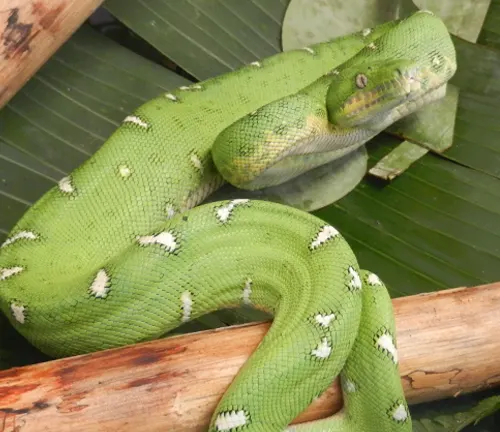
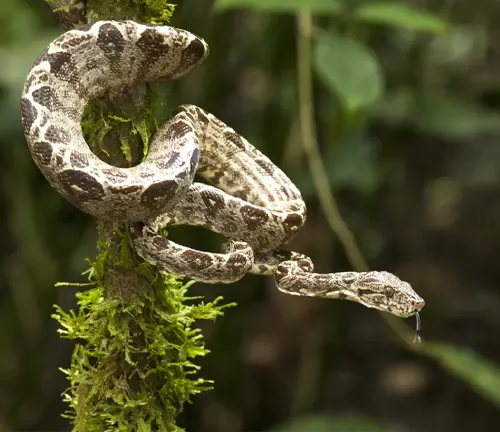
Corallus hortulanus
(Amazon Tree Boa)
This species is closely related to the Emerald Tree Boa and is found in the Amazon rain forest. It exhibits a variety of colour morphs and is known for its arboreal lifestyle.
Corallus ruschenbergerii
(Ruschenberger’s Tree Boa)
Also known as Ruschenberger’s Tree Boa, this species is found in Colombia and Ecuador. It has a more slender appearance compared to Corallus caninus.

Frequently Asked Questions (FAQs)
1. What is the Emerald Tree Boa?
The Emerald Tree Boa (Corallus caninus) is a non-venomous snake species known for its vibrant emerald green coloration and distinctive white markings. It is an arboreal species found in the rain forests of South America.
2. What is the habitat of the Emerald Tree Boa?
Emerald Tree Boas inhabit tropical rain forests, particularly favouring the canopy of trees. They are skilled climbers and spend a significant portion of their lives coiled around branches.
3. Are Emerald Tree Boas venomous?
No, Emerald Tree Boas are non-venomous. They rely on constriction to subdue and consume their prey, which primarily consists of small mammals and birds.
4. How big do Emerald Tree Boas get?
Adult Emerald Tree Boas typically range from 6 to 7 feet (1.8 to 2.1 meters) in length, with females generally being larger than males.
5. What is their behaviour like in captivity?
In captivity, Emerald Tree Boas can be somewhat challenging to keep due to their specific environmental needs. They may be defensive and require an enclosure that mimics their natural habitat, including proper temperature and humidity levels.
6. What is their lifespan?
Emerald Tree Boas have a relatively long lifespan, with individuals in captivity potentially living over 20 years if provided with proper care.
7. Are Emerald Tree Boas good for beginners as pets?
Due to their specific care requirements and potentially defensive behaviour, Emerald Tree Boas are not typically recommended for beginners. They are better suited for experienced reptile keepers.
8. How do they reproduce?
Emerald Tree Boas are oviparous, meaning they give birth to live young. Female boas retain eggs inside their bodies until they hatch, and then give birth to fully formed offspring.
9. What is their conservation status?
As of my last knowledge update in January 2022, the Emerald Tree Boa is not listed as endangered or threatened. However, like many reptile species, they face potential threats from habitat loss and illegal wildlife trade.
10. Can Emerald Tree Boas be kept as pets legally?
The legality of keeping Emerald Tree Boas as pets varies by location. It’s important to check local and international regulations, as well as ensure that any acquisition complies with ethical and legal standards.


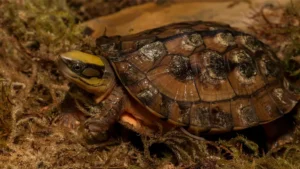


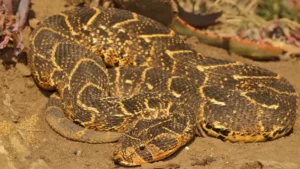

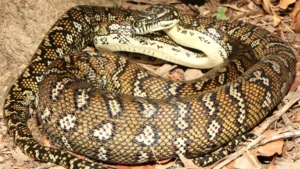


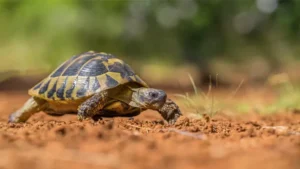
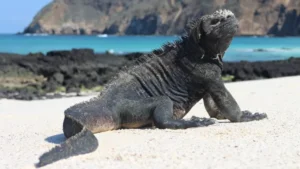
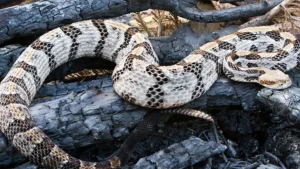

Leave your comment